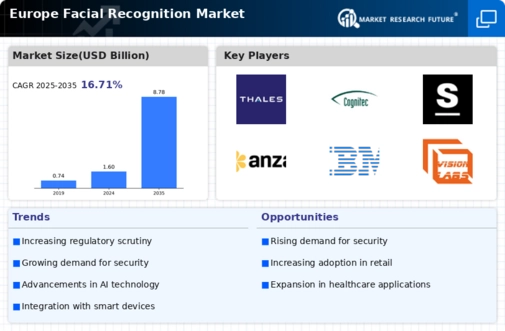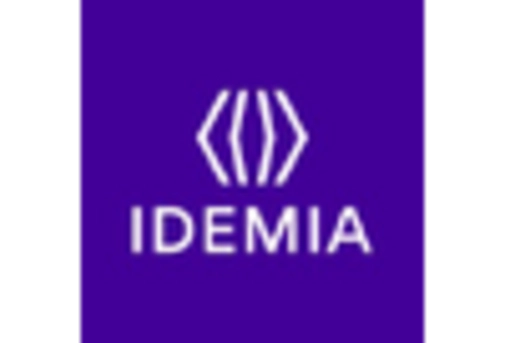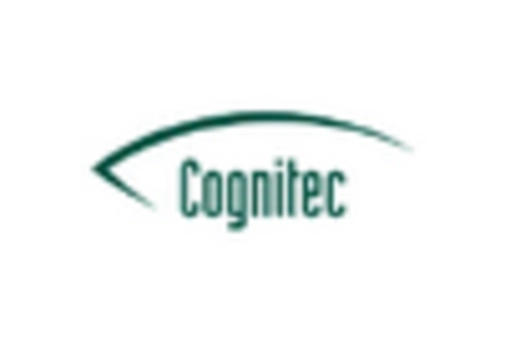The competitive insights of the Europe Facial Recognition Market reveal a rapidly evolving landscape marked by technological advancements, regulatory challenges, and an increasing focus on privacy and security. As countries across Europe emphasize law enforcement, border control, and surveillance, numerous players are striving to capture market share.
The market is not only characterized by established companies but also by startups that are innovating and introducing transformative solutions. Competition is intensifying as firms invest heavily in research and development to enhance the accuracy and efficiency of their facial recognition technologies.
Additionally, strategic partnerships and collaborations are becoming more common as firms look to leverage complementary strengths and broaden their service offerings in this dynamic sector.
Verisk Analytics has carved a niche for itself within the Europe Facial Recognition Market through its robust analytical capabilities and data-driven insights. The company's strength lies in its extensive experience in data analytics, allowing it to provide tailored solutions that cater to various sectors including insurance, automotive, and public safety.
Verisk Analytics has established a strong market presence in Europe, effectively capitalizing on the rising demand for advanced security solutions fueled by heightened awareness of data privacy issues. The company’s emphasis on accuracy and reliability in its facial recognition technologies has cemented its reputation among key stakeholders, enhancing its competitive position in this growing market.
Gemalto has emerged as a pivotal player in the Europe Facial Recognition Market, known for its innovative approach to secure digital services and identity verification. The company offers a diverse array of products and services, including biometric identification solutions that leverage facial recognition technology for secure authentication.
Gemalto's strategic focus on aligning its offerings with European regulations sets it apart from competitors, enabling it to effectively address the nuanced demands of this market. With a strong presence across the region, the company has invested in significant mergers and acquisitions to consolidate its market position and enhance its technological capabilities.
Its commitment to integrating cutting-edge technologies and maintaining compliance with privacy standards bolsters its reputation, attracting a clientele that values security and efficiency in identity verification processes.






















Leave a Comment